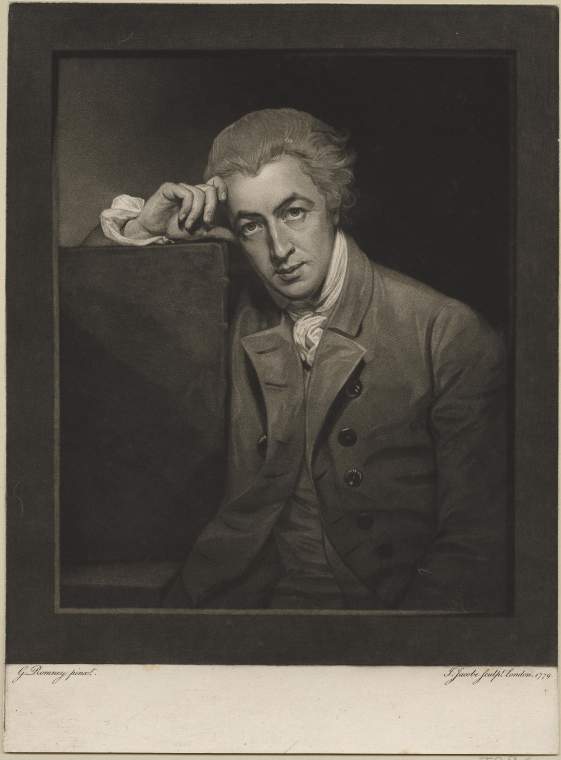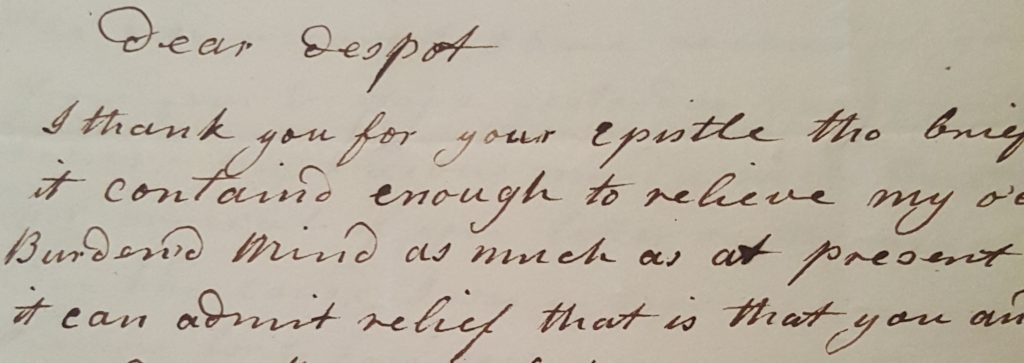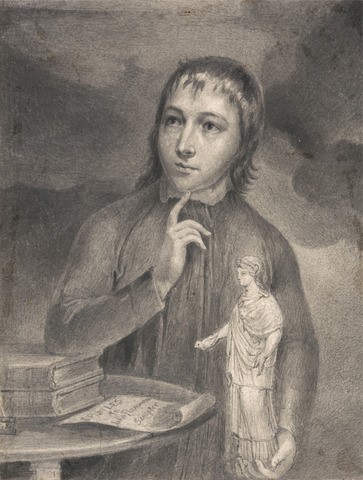A poet, his wife, and “the ugliest of all possible kept mistresses”. In the second instalment of a series on the Fitzwilliam Museum’s Hayley Papers, Lisa Gee introduces an eighteenth-century love triangle.
William Hayley married his first wife, Eliza, on the rebound. When it turned out that she couldn’t bear to be touched, they brought another woman into their marriage.

Hayley’s Women: Eliza Ball Hayley and Mary Cockerell
Deep within the Fitzwilliam Museum’s Hayley Papers is a handful of deeply affectionate letters written to William Hayley and his son Tom. Three were attributed to Hayley’s first wife Eliza, the others to a “Miss Betts” who, until recently was thought to be Tom’s mother. In fact, they were all written by Mary Cockerell – the woman art historian Suzanne E May identified as Tom’s actual mother in 2012, and who was described by the man who edited Hayley’s Memoirs as “the sourest and, I think the ugliest of all possible kept mistresses”. Sour and ugly she might have been, but what’s clear from these letters is that she really loved Hayley. Aside from his mother and nursemaid Sarah Betts (whose daughter many people thought was Tom’s mother), she was possibly the only woman who did so unconditionally.

A catalogue of disasters
Despite authoring a bestselling and highly-influential book advising young women on how to attract and keep a husband, William Hayley’s love life was a catalogue of disasters. Between 1763 and 1814, he notched up one secret engagement, two marriages, two separations, a case for divorce or separation from bed and board, one adored illegitimate son, and a long liaison with Mary Cockerell.
The letters in the Fitzwilliam’s collection are all unsigned. Most date from the days and weeks after Hayley’s first wife Eliza died in November 1797, and were sent to him at Eliza’s last address, while Hayley was sorting out Eliza’s effects. The degree of affection expressed suggests that Mary may have hoped to become the second Mrs Hayley. And, had Tom (then seventeen), not become ill with the progressively debilitating condition that would, two-and-a-half years later, kill him, she might have done – despite the difference in their social status. After all, Hayley’s friend and neighbour, Lord Egremont, went on to marry his long-term mistress Elizabeth Iliffe – a teacher’s daughter – in 1801.

Yale Center for British Art, Yale Art Gallery Collection, Gift of Charles Rosenbloom
Marriage on the rebound
It might seem odd to ask why a landed gentleman in the eighteenth century had a mistress: this was hardly unusual at the time. But Hayley’s circumstances were unusual. He had married his first wife Eliza on the rebound. The daughter of the Hayleys’ close friend Thomas Ball, the Dean of Chichester, Hayley had been tutoring Eliza, and she had also been ferrying correspondence between him and Fanny Page, the girl with whom he had contracted a secret engagement. When Fanny broke that off, Hayley turned to Eliza, and they married within months.
But it transpired that Eliza couldn’t bear to be touched.
In Hayley’s words:
She ne’er can feel what all her Sex have felt,
The glowing Impulse of impassion’d Fire
Stranger to genial Warmth, she ne’er can melt
In the sweet Trance of satisfied Desire.
(from “ELEGY: On a Lady who laboured under an Insanity of many years, and recovered in the close of a long life an imperfect use of her reason. 1783”. This stanza, along with several others, appears in Anecdotes of the Family, Life, and Writings of William Hayley by himself – the manuscript version of Hayley’s memoirs. But, along with several others touching on similarly sensitive topics, it was cut from the published version).
After Eliza’s death, the poet Anna Seward also wrote of her friend’s aversion to physical contact.
“Fire in her affections, frost in her sensations, she shrunk from the caresses of even the husband she adored. Hence, while she had a morbid degree of tenaciousness respecting his esteem and attention, she was incapable of personal jealousy; and would amuse herself with the idea of those circumstances, with which she could so perfectly well dispense, being engrossed by another”.
Eighteenth-century love triangle?
And this was what happened. At some point in the 1770s, in an Abraham-Sarah-and-Hagar-style move, the couple brought Mary into their lives. As well as the mother of Hayley’s son, Mary became their trusted maid and valet, and functioned as Hayley’s secretary. When, in spring 1789, Hayley and Eliza eventually separated, Mary went with Eliza to Derby, where Hayley settled his estranged wife under the care of the widow of one of his university friends. Mary Cockerell – devoted to Eliza – stuck it out for several months, but ultimately couldn’t bear to be separated from Tom. She returned to Hayley’s house in Eartham the following October, where evidence suggests she stayed until Tom’s death. We know she was running Hayley’s household in 1792, when William Cowper and his entourage visited: that was when the Reverend John Johnson, who edited Hayley’s Memoirs wrote, in a letter to his sister, the unflattering description quoted in the opening paragraph. And we also know that Mary cared for Tom in Eartham House from early 1798 until he died in May 1800, staying on after Hayley moved to his new house in Felpham, and subsequently moving to a cottage Hayley procured for her on the edge of the Eartham estate, where she stayed until she died in November 1810.
You can read the first instalment in the blog series here. Watch out for more posts on Hayley and his world as the project progresses.







